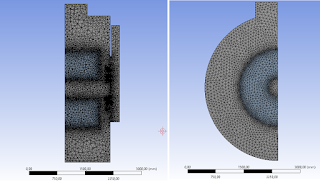Today I would like to show you how easy it is to control the analysis in Fluent. All the necessary items can be found in the solver under Run Calculation menu. This is where the coefficients can be modified on an ongoing basis so that our residual equations are at the required level.
 |
| Example of residual plot in Fluent |















